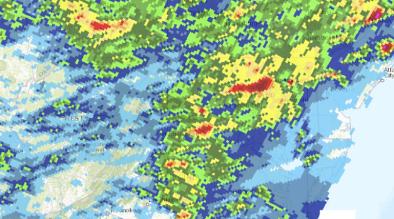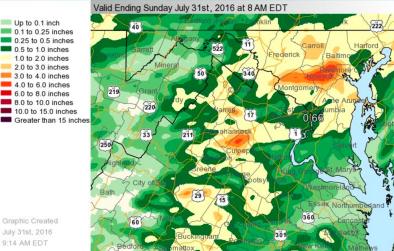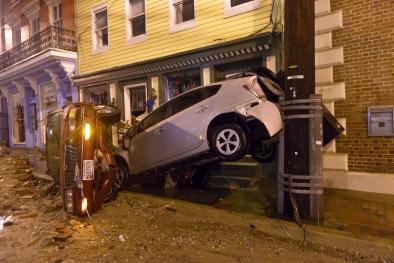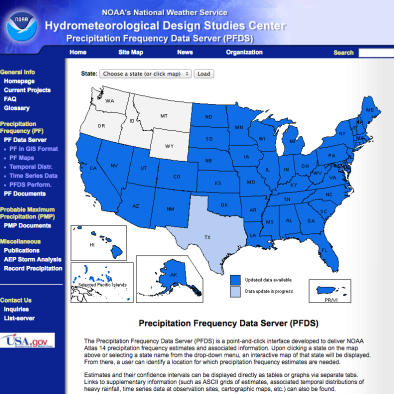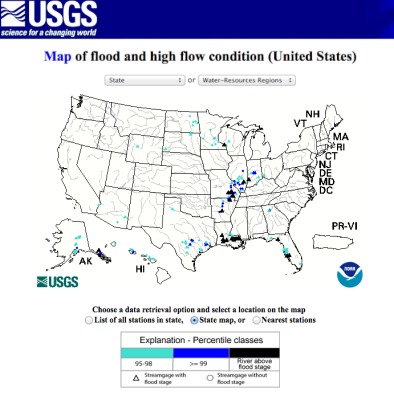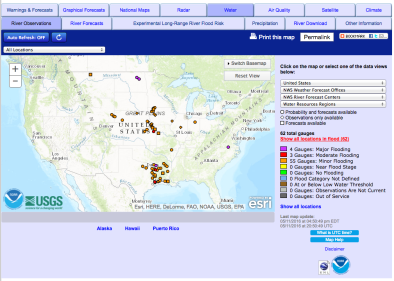Ellicott City Floods July 2016
Once-in-a-thousand year rainfall swept through Ellicott City, Maryland, on July 30—killing two people, damaging dozens of buildings and more than 170 cars in the historic town. The flooding was the result of slow-moving thunderstorms in the region that dumped more than 6 inches of rain in just two hours. Climate change increases the risk of flooding by increasing the frequency of extreme precipitation. In the northeastern region of the US extreme precipitation has increased 71 percent from 1958 to 2012.
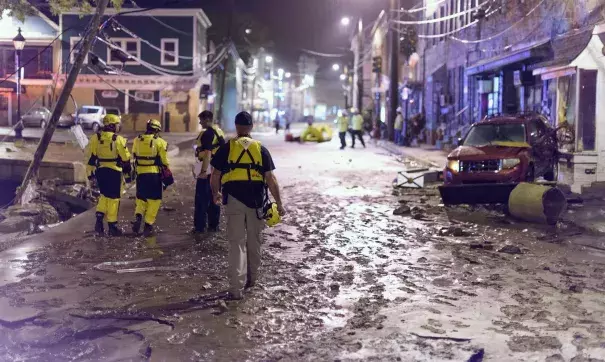
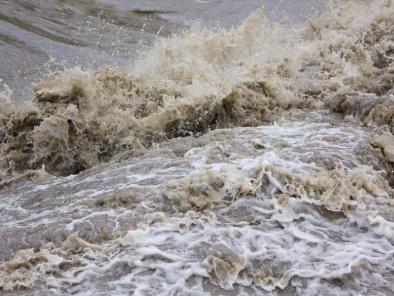
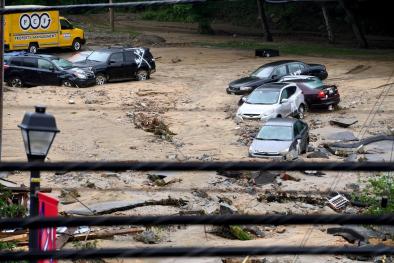
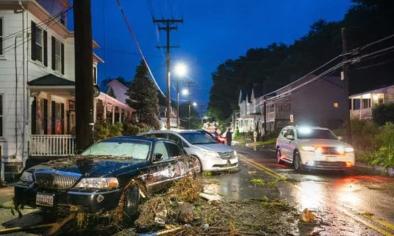

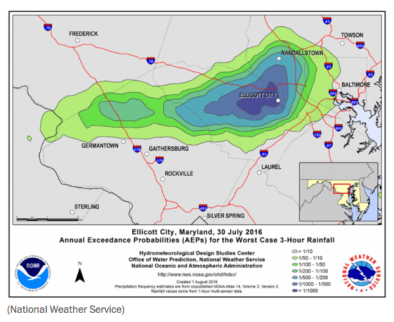

Ellicott City receives a month's worth of rainfall in two hours
 On the night of July 30, more than six inches of rain fell between 7:00 and 9:00pm in Howard County, Maryland, the equivalent of a month of normal rainfall, according to Howard County Executive Allan Kittleman.[1] The extreme rainfall caused extensive flooding that devastated downtown Ellicott City, killing two people and destroying or damaging at least 25 buildings.
On the night of July 30, more than six inches of rain fell between 7:00 and 9:00pm in Howard County, Maryland, the equivalent of a month of normal rainfall, according to Howard County Executive Allan Kittleman.[1] The extreme rainfall caused extensive flooding that devastated downtown Ellicott City, killing two people and destroying or damaging at least 25 buildings.
A rise of more than 13 feet was recorded on the Patapsco River in Ellicott City in a few hours time Saturday evening.[2] Record flooding was recorded by two gauges on the Patapsco River downstream from Ellicott City in Catonsville and near Elkridge.[3][4] On July 31, Maryland Governor Larry Hogan signed an executive order declaring a state of emergency in Howard County.[5]
The extreme rainfall amounts were so rare, according to the National Weather Service, that such an event would be expected to occur just once every 1000 years, based on historical trends.[6] Climate change increases the risk of flooding by increasing the frequency of extreme precipitation. Warmer air holds more water, leading to stronger and more frequent heavy precipitation events, a global trend that has been firmly attributed to climate change.
Climate change is now responsible for 17 percent of moderate extreme rainfall events, i.e. one-in-a-thousand day events. The more extreme the event, the more likely climate change was responsible, as climate change affects the frequency of the extreme events the most. In the instance of a one-in-a-thousand year event, such as that occurred in Maryland, the odds that climate change was responsible is dramatically higher.[7]
Extreme rainfall fits with increased heavy precipitation trend in the Northeast
 Climate change contributes to increased flooding because warmer air holds more water, leading to stronger and more frequent precipitation events.
Climate change contributes to increased flooding because warmer air holds more water, leading to stronger and more frequent precipitation events.
In the mid-latitudes, where most of the continental US is located, there is an upward trend in extreme precipitation in the vicinity of fronts associated with mid-latitude storms.[8]
In the northeastern region of the US that includes Maryland, extreme precipitation has increased 71 percent from 1958 to 2012.[9]
There has also been a jump in the number of days per year with more than 2 inches of rain in Baltimore since 1950,[10] as well as a steady increase in that measure nationwide.[11]
Howard County Executive Allan Kittleman said of the July 30 storm in Ellicott, "We've never seen such devastation. I've lived in Howard County well over 50 years. I've never seen such devastation. I was here for (Hurricane) Agnes. I was 14 years old. I remember it. You know, it was a lot of water and it was a lot of mud, but it didn't have the force as this storm." [5]
Unique geography makes event more complex
 The Chesapeake Bay divides Maryland into two distinct areas; counties in the Atlantic coastal plain that lie to the east where some border the Atlantic Ocean (known as the Eastern Shore), and counties that comprise the Appalachian and Piedmont areas of the state, including Howard County, where Ellicott City is located.[12]
The Chesapeake Bay divides Maryland into two distinct areas; counties in the Atlantic coastal plain that lie to the east where some border the Atlantic Ocean (known as the Eastern Shore), and counties that comprise the Appalachian and Piedmont areas of the state, including Howard County, where Ellicott City is located.[12]
Ellicott City’s geography makes it particularly vulnerable to extreme rainfall events.[6] It is bordered by the Patapsco River and by areas of higher elevation, which means heavy rain could trigger flooding from two directions, as it did in this case.[6]
The unincorporated town of 68,000 has endured at least four major floods, according to the Maryland Historic District’s web site, including a pair in the 1970s, another in 1923 and one in 1868 that “wiped out most of early industry in the valley sparing only the flour mill.”[6]
The Baltimore Sun reported in 2012, “that Ellicott City has come in for an inordinate amount of disasters from floods, fires and railroad wrecks since its founding in 1772.”[13]
Extreme rainfall events in Maryland are linked to heightened risk of gastrointestinal disease
An October 2015 study offers the first empirical evidence showing that extreme rainfall events in Maryland are increasing communities' risk of Salmonella poisoning.[14] The study by Jiang et al finds a 5.6 percent increase in salmonellosis risk associated with increases in the heaviest 10 percent of storms, with the impact disproportionately felt in coastal areas.[14]
The study provides evidence that heightened risk of extreme rainfall and flooding due to climate change has a direct impact on the overall burden of infectious diseases such as salmonellosis.
Related Content
